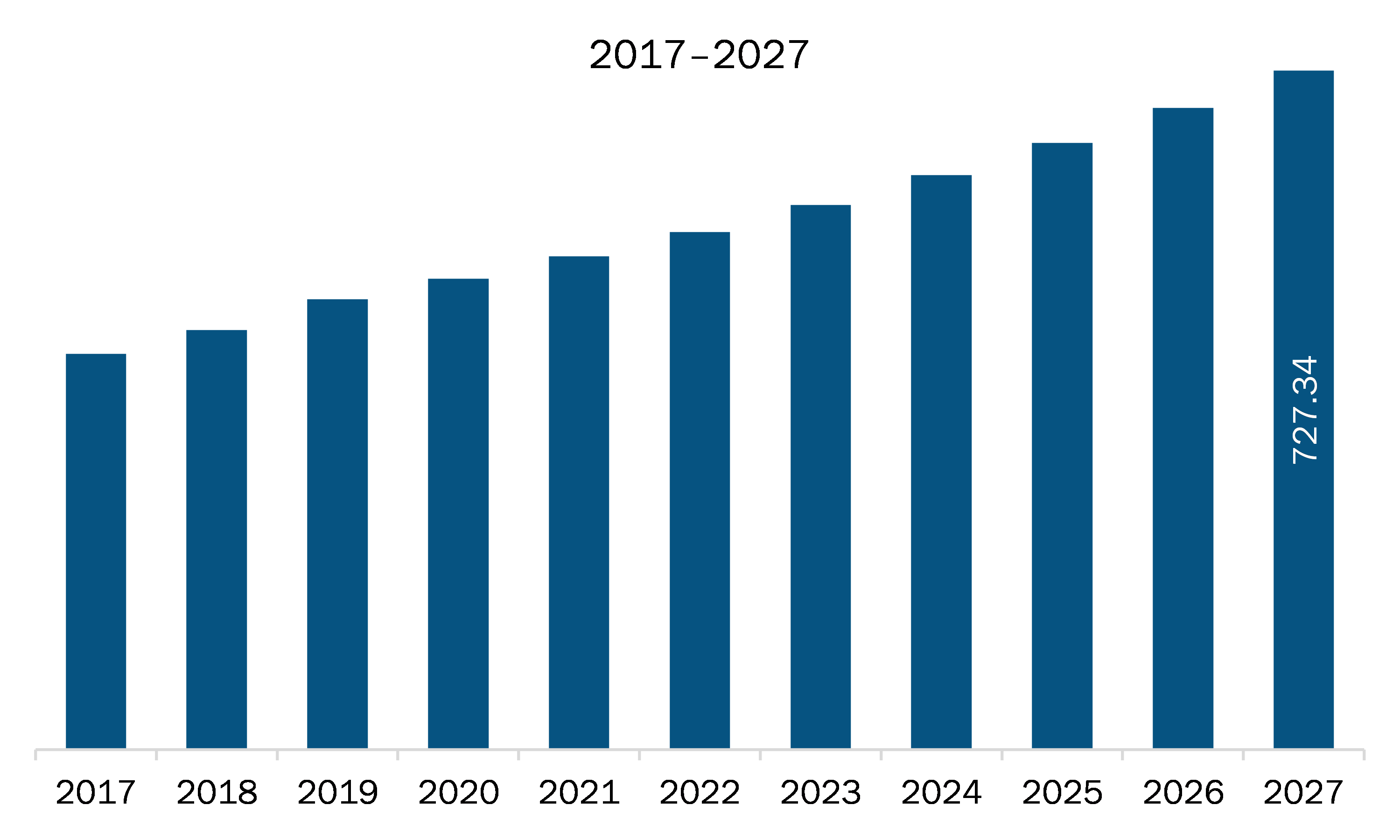The Middle East & Africa industrial wood adhesives market is expected to grow from US$ 564.85 million in 2020 to US$ 727.34 million by 2027; it is estimated to grow at a CAGR of 3.7% from 2020 to 2027.
The Middle East & Africa region includes countries such as South Africa, Saudi Arabia, the UAE, and the rest of MEA. The region is expected to witness a rapid increase in commercialization and industrialization, which would further boost the varied industrial sectors. New investment and better marketing strategies have led to the capture of market share in the MEA region. The construction industry in the MEA is one of the fastest-growing sectors. The market in MEA is expected to expand due to rising demand for wood in the construction industry. Factors such as population growth, affordable housing, and a rise in tourism due to the hosting of mega-events have prompted the government to invest more in construction projects. Adoption of long-term economic diversification plans, such as Abu Dhabi Vision 2030 and Saudi Vision 2030, is further expected to increase investment in infrastructure, thus improving the construction industry. Also, the demand for the wood in the Middle East is expected to grow due to an increase in the construction of restaurants and hotels, re-painting of old hotels, and maintenance of the architecture.
In case of COVID-19, in Middle East & Africa, especially South America, witnessed an unprecedented rise in number of coronavirus cases, which led to the discontinuation of industrial wood adhesives manufacturing activities. Downfall in other chemical and materials manufacturing sectors has subsequently impacted the demand for industrial wood adhesives during the early months of 2020. Moreover, decline in the overall construction and building materials manufacturing activities has led to discontinuation of industrial wood adhesives manufacturing projects, thereby reducing the demand for industrial wood adhesives. Similar trend was witnessed in other Middle East & Africa countries, i.e., UAE and Saudi Arabia. However, the countries are likely to overcome thus drop in demand with the economic activities regaining their pace, especially in the beginning of the 2021.

- This FREE sample will include data analysis, ranging from market trends to estimates and forecasts.
Middle East & Africa Industrial Wood Adhesives Market Segmentation
Middle East & Africa Industrial Wood Adhesives Market – By Type
- Natural
- Synthetic
Middle East & Africa Industrial Wood Adhesives Market – By Technology
- Solvent-Based
- Water-Based
- Solventless
- Others
Middle East & Africa Industrial Wood Adhesives Market – By Country
- South Africa
- Saudi Arabia
- UAE
- Rest of Middle East & Africa
Middle East & Africa Industrial Wood Adhesives Report Scope
| Report Attribute | Details |
|---|---|
| Market size in 2020 | US$ 564.85 Million |
| Market Size by 2027 | US$ 727.34 Million |
| CAGR (2020 - 2027) | 3.7% |
| Historical Data | 2018-2019 |
| Forecast period | 2021-2027 |
| Segments Covered |
By Resin Type
|
| Regions and Countries Covered |
Middle East and Africa
|
| Market leaders and key company profiles |
|
- Historical Analysis (2 Years), Base Year, Forecast (7 Years) with CAGR
- PEST and SWOT Analysis
- Market Size Value / Volume - Regional, Country
- Industry and Competitive Landscape
- Excel Dataset
Recent Reports
Testimonials
Reason to Buy
- Informed Decision-Making
- Understanding Market Dynamics
- Competitive Analysis
- Identifying Emerging Markets
- Customer Insights
- Market Forecasts
- Risk Mitigation
- Boosting Operational Efficiency
- Strategic Planning
- Investment Justification
- Tracking Industry Innovations
- Aligning with Regulatory Trends






















 Get Free Sample For
Get Free Sample For